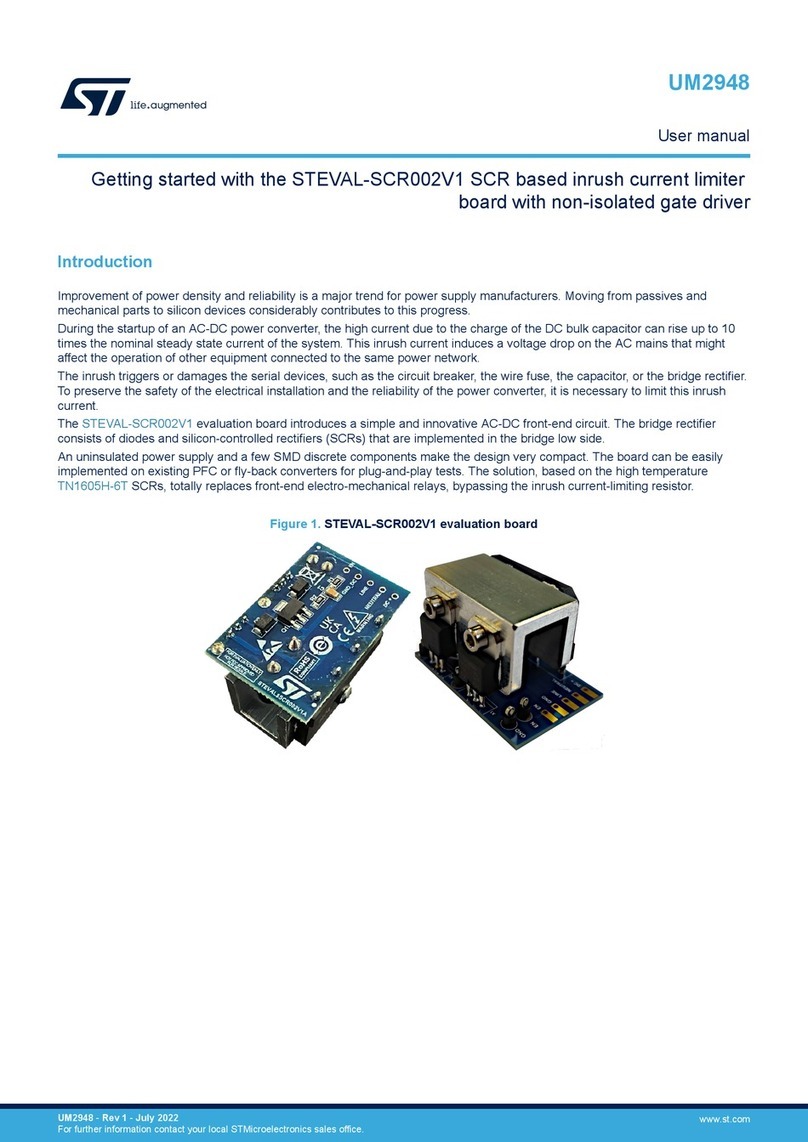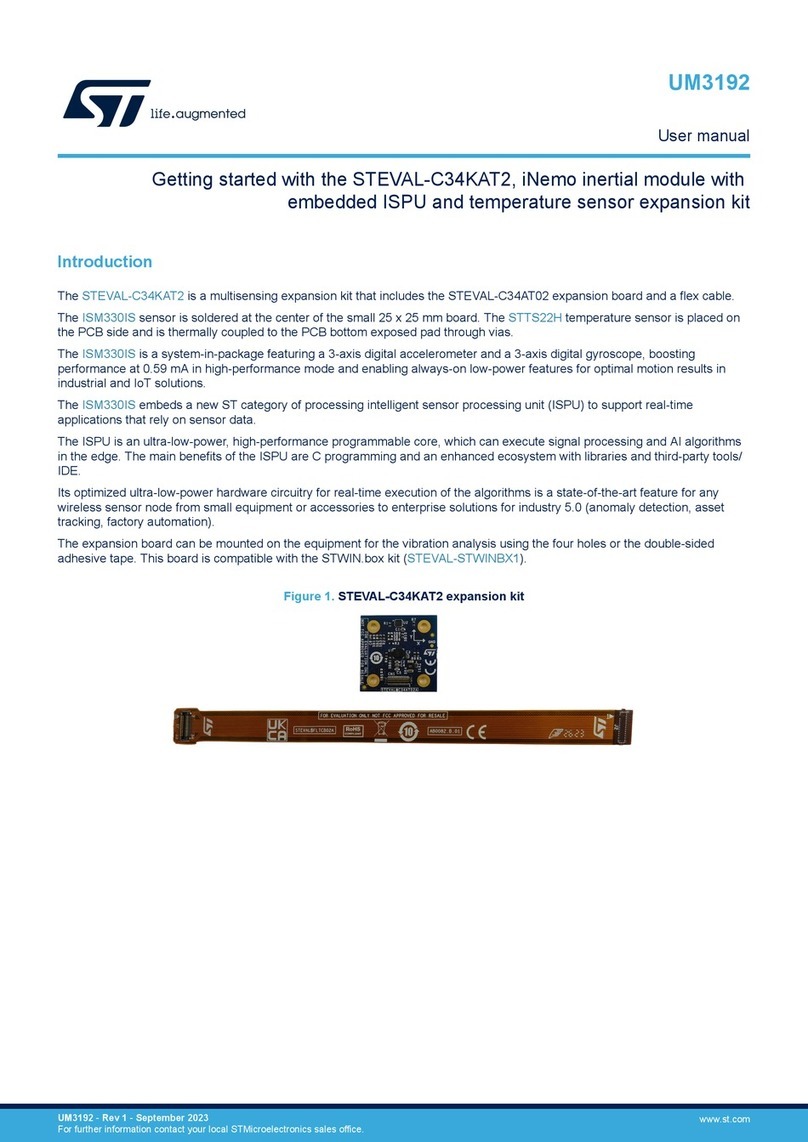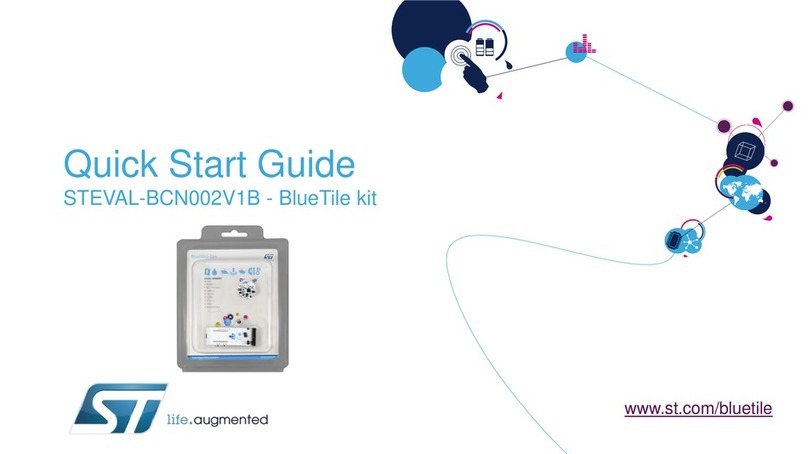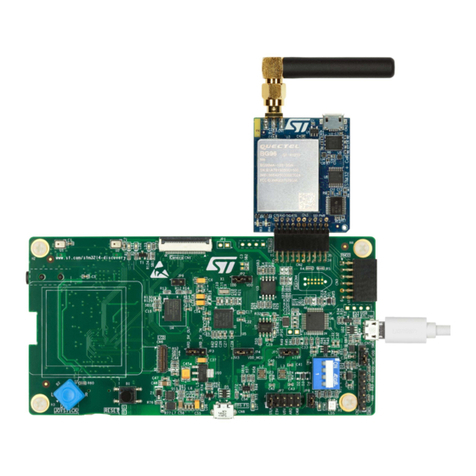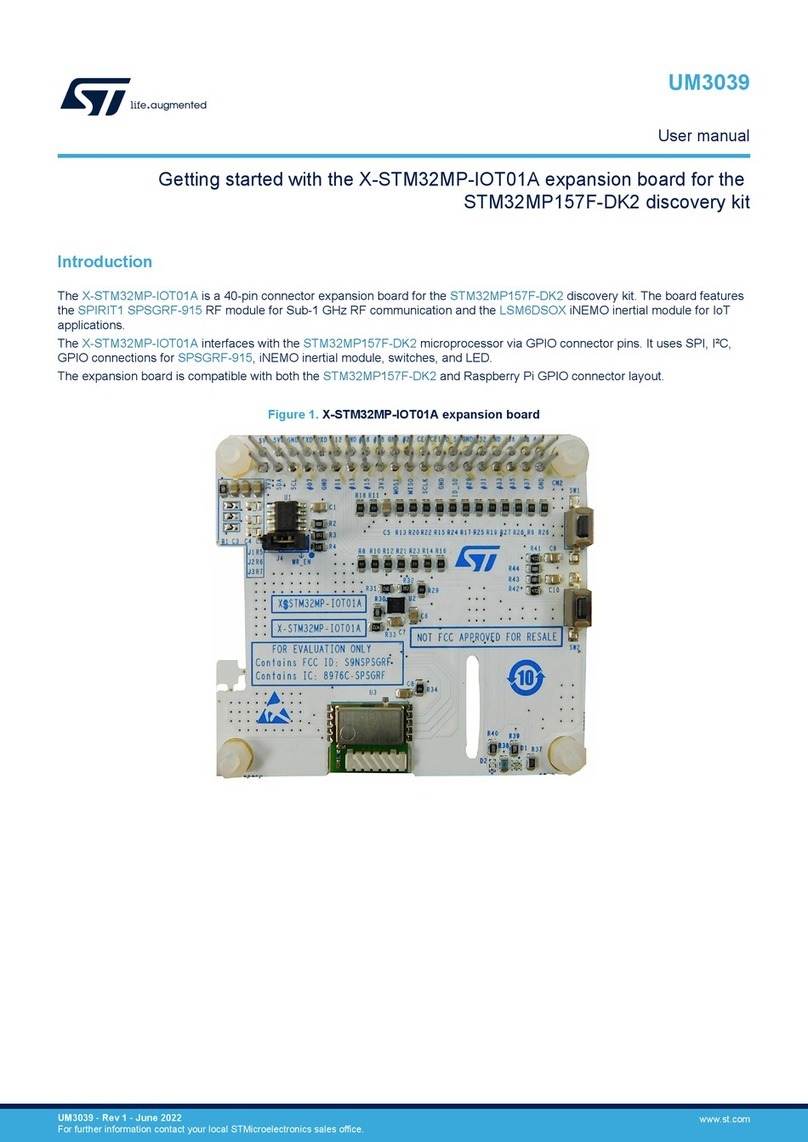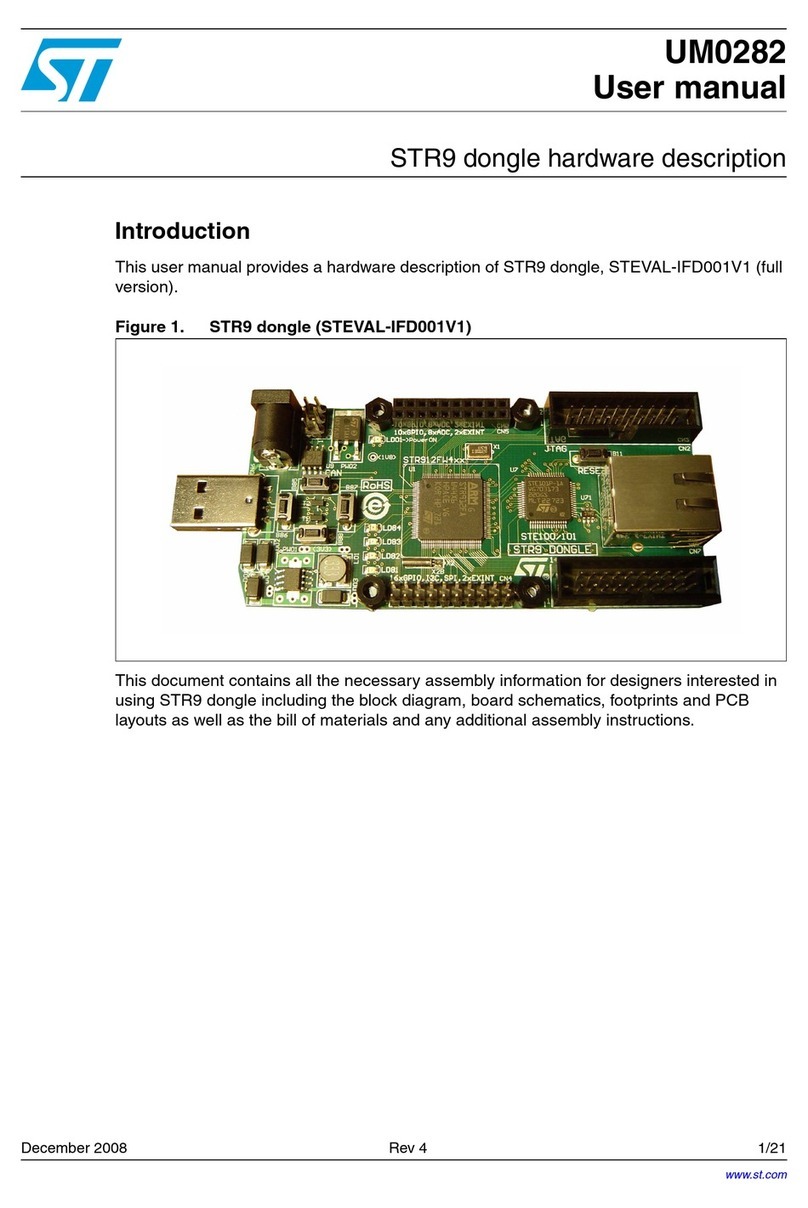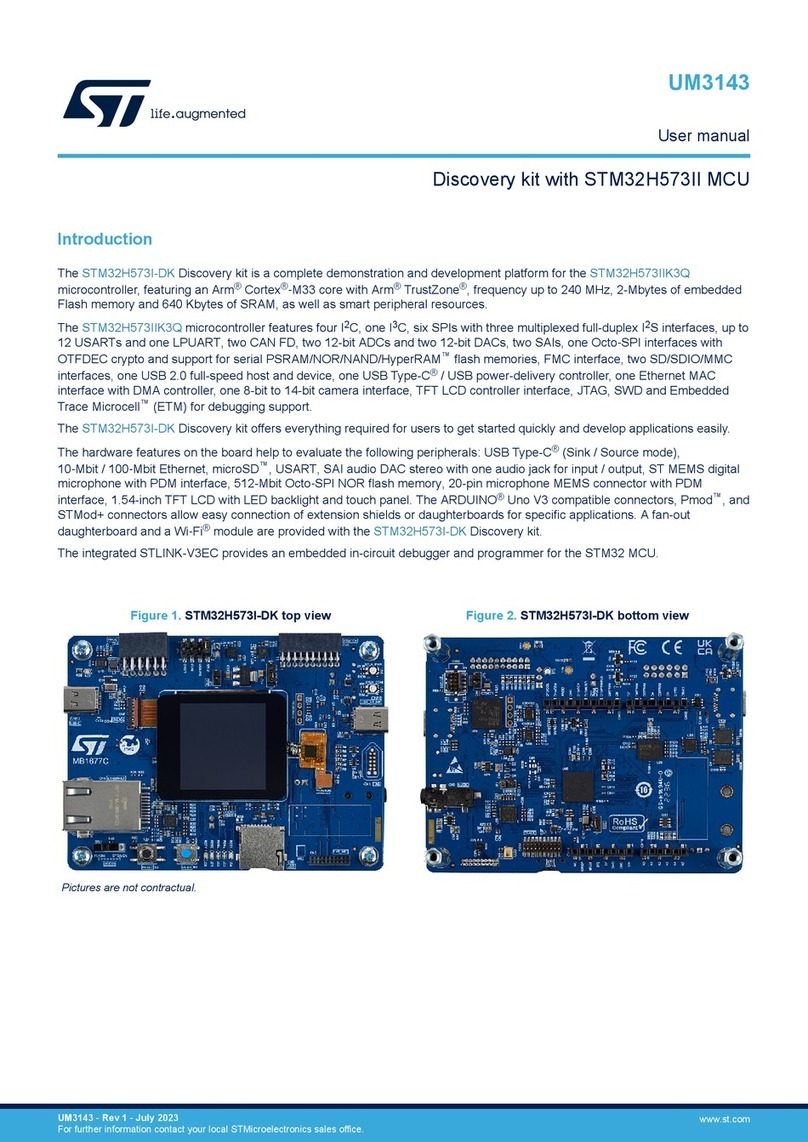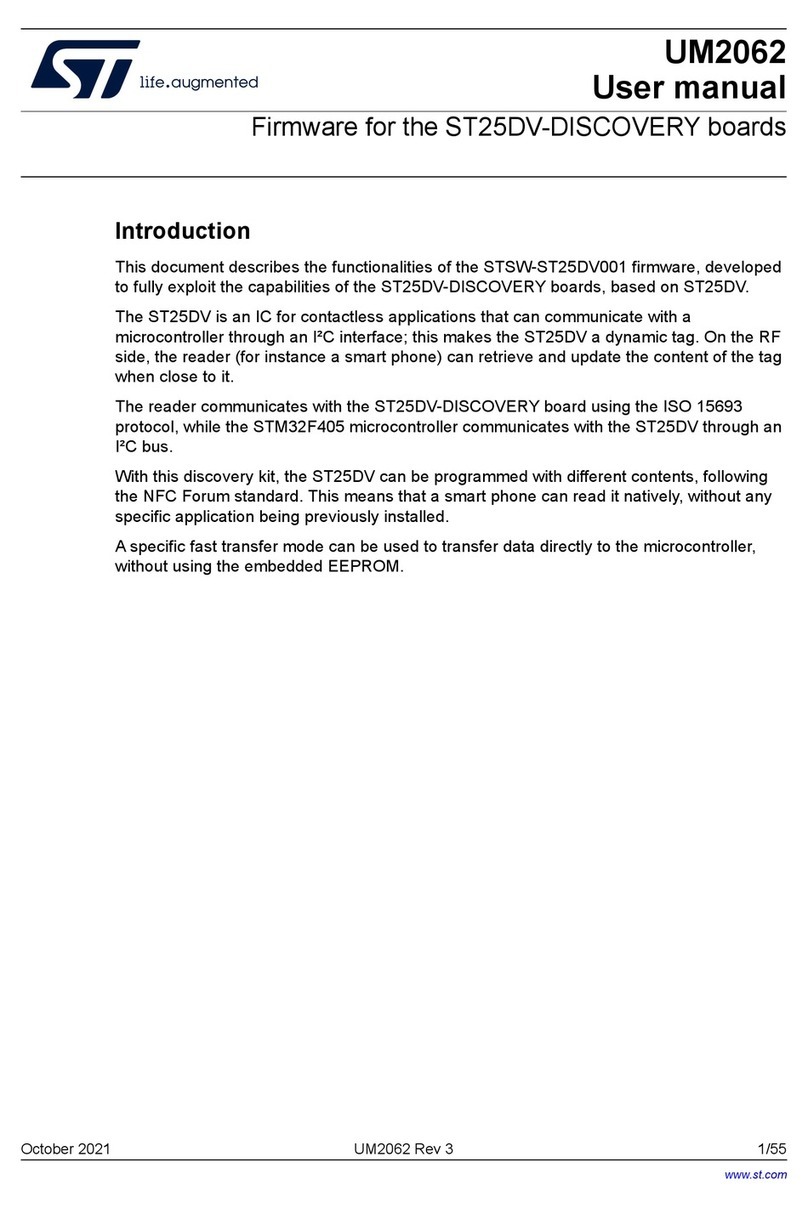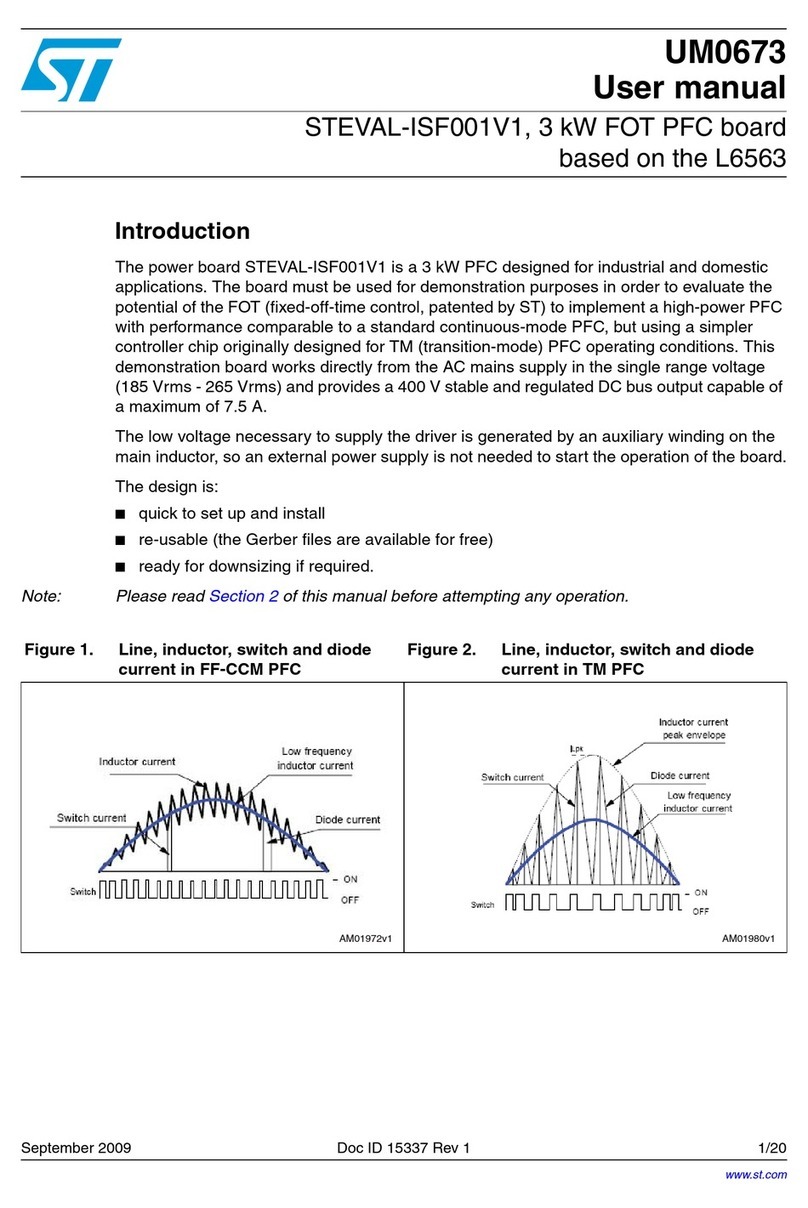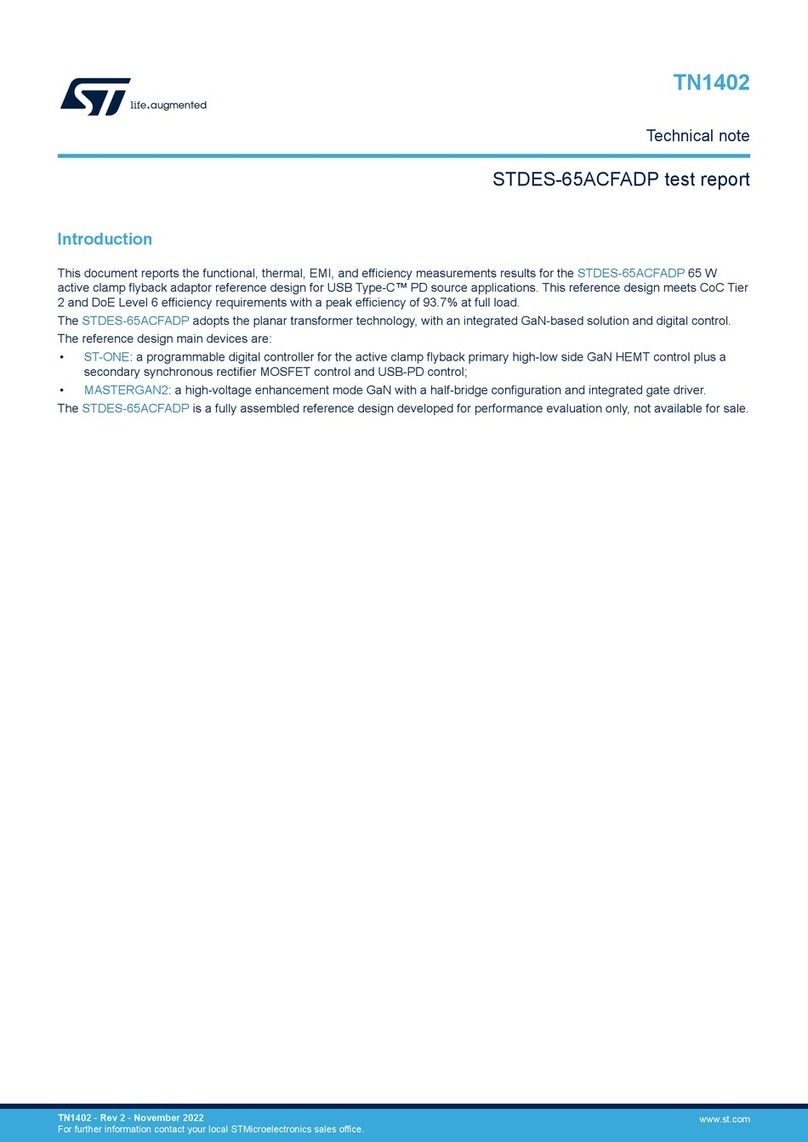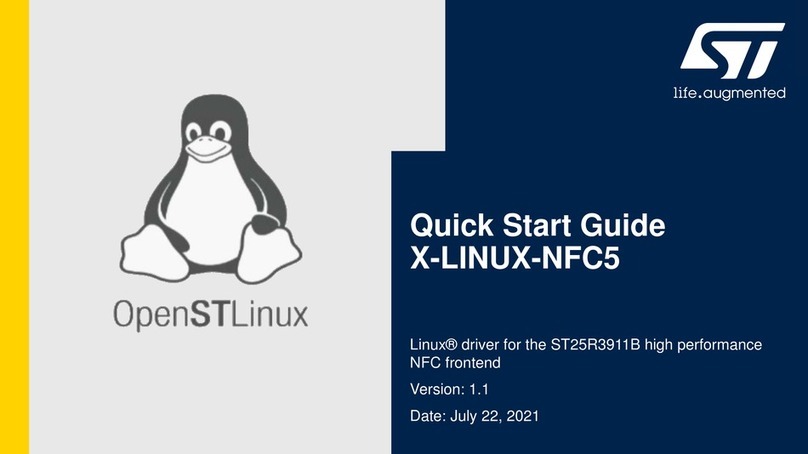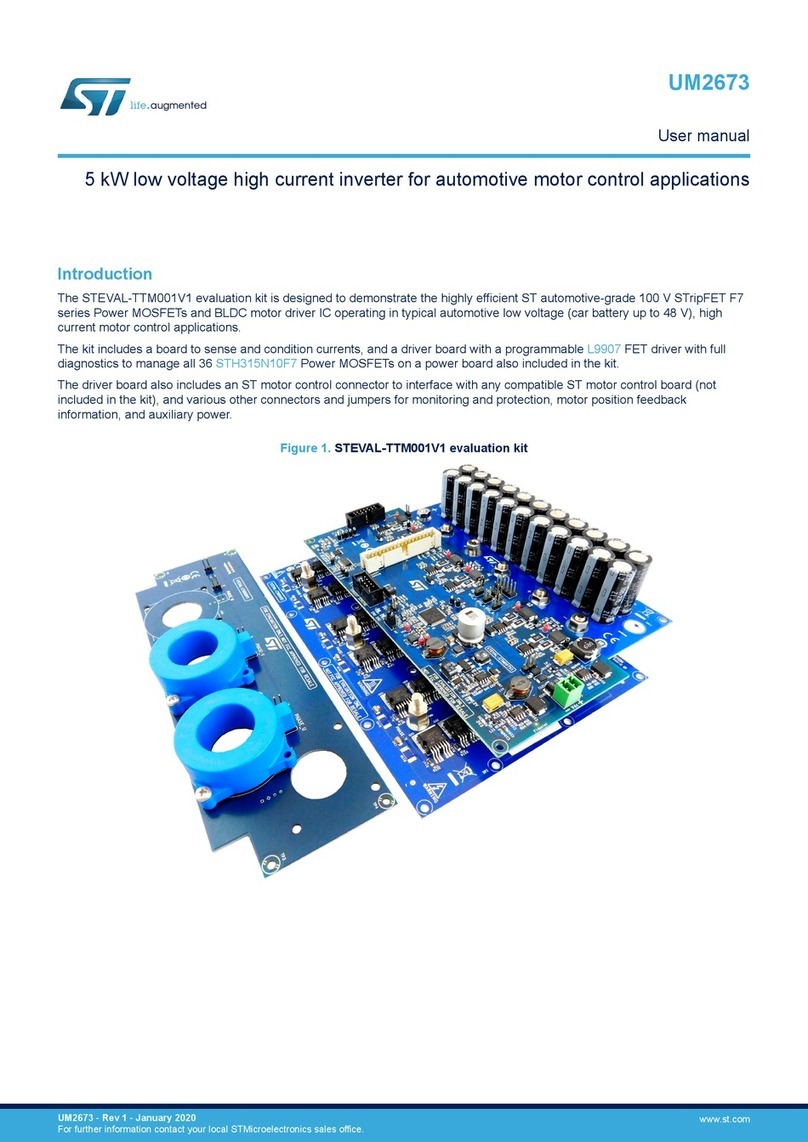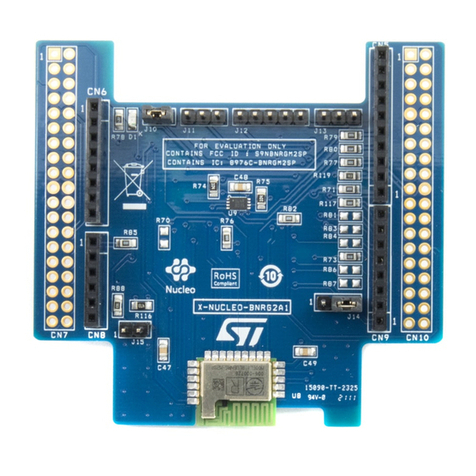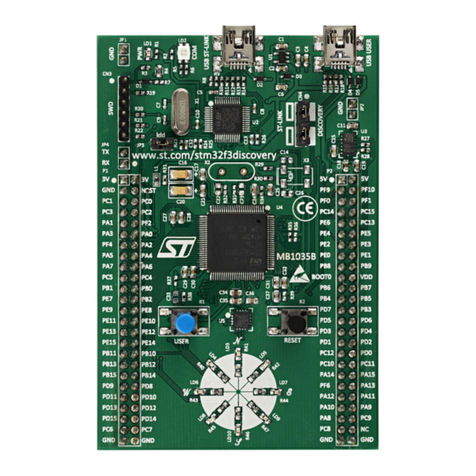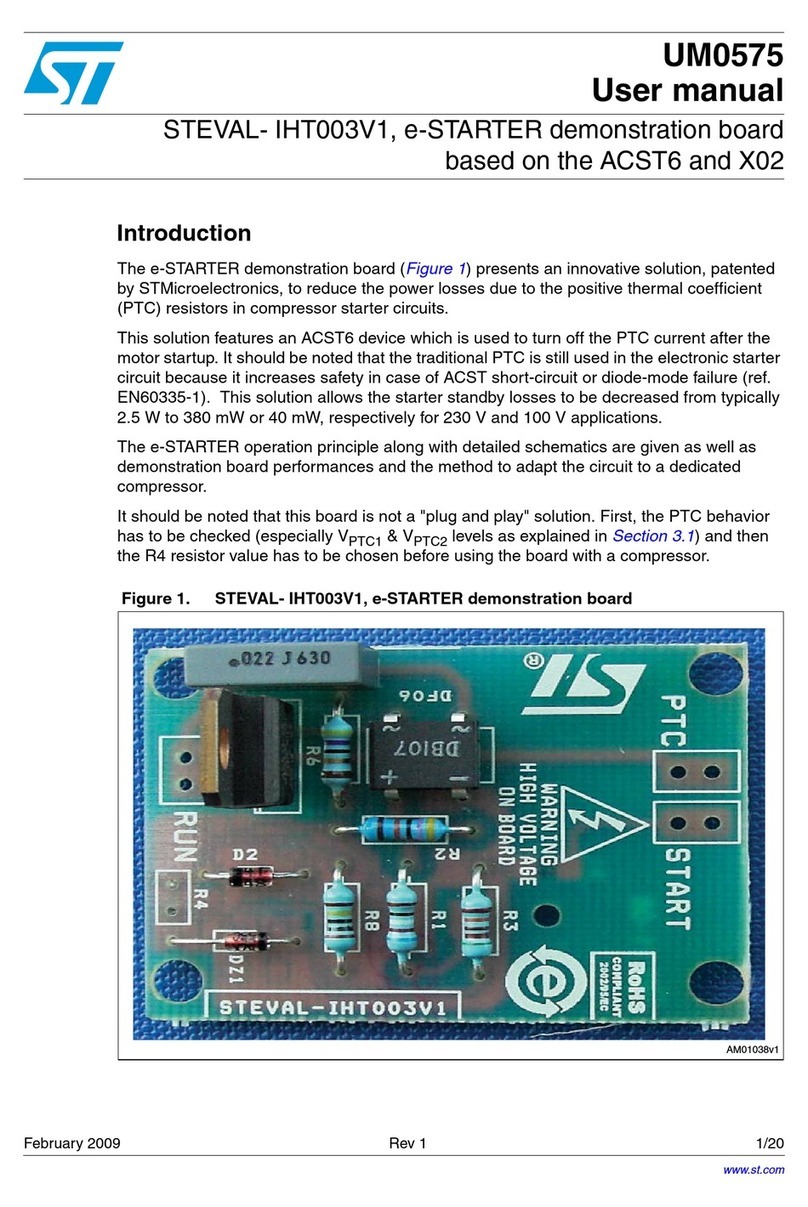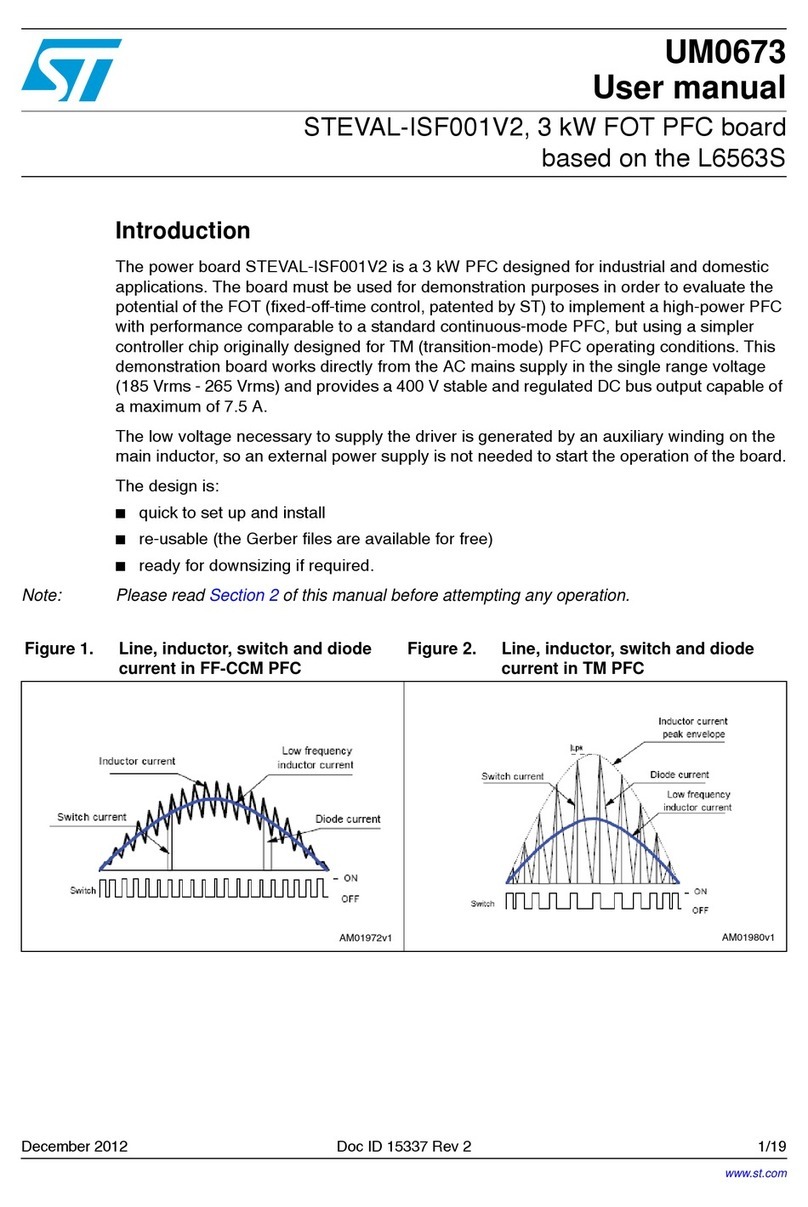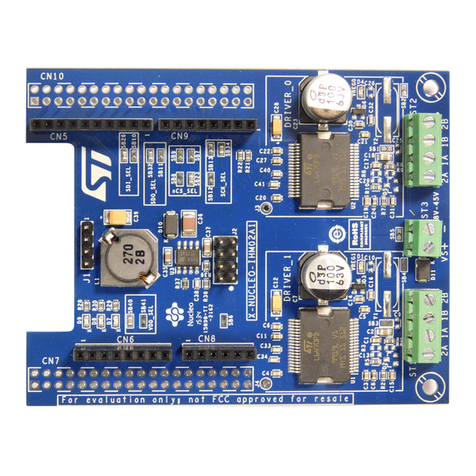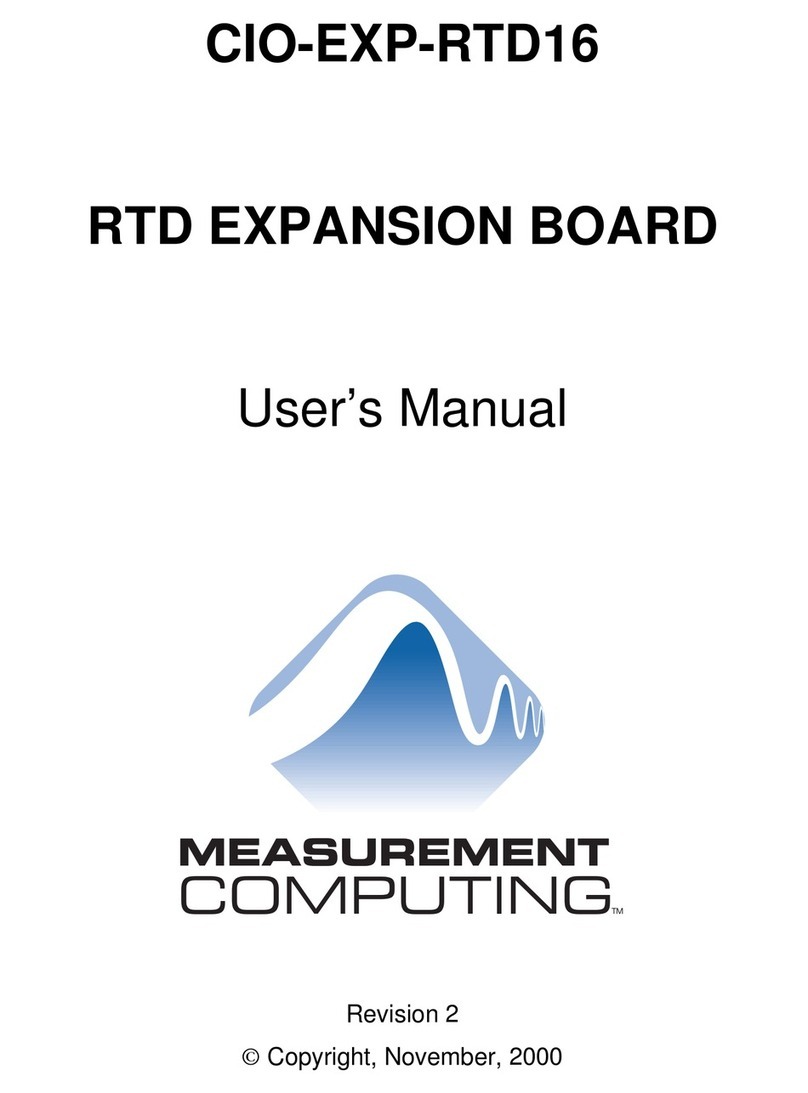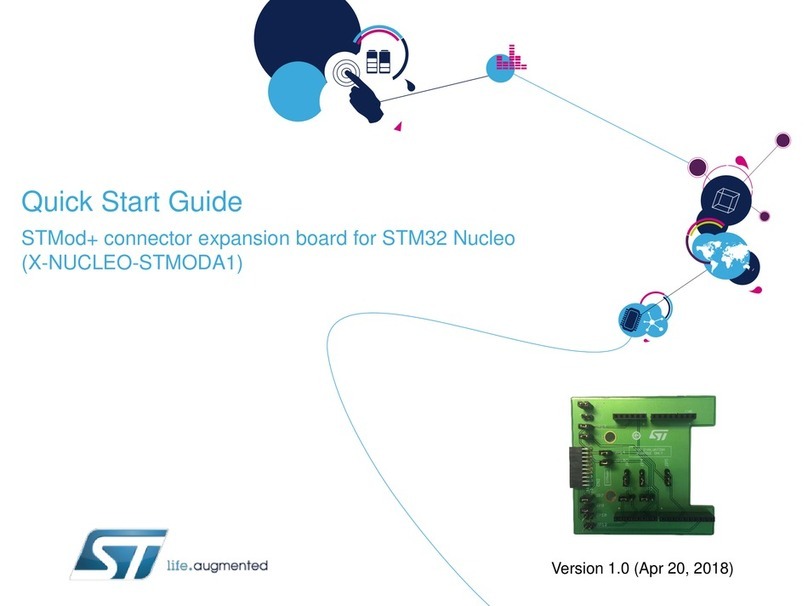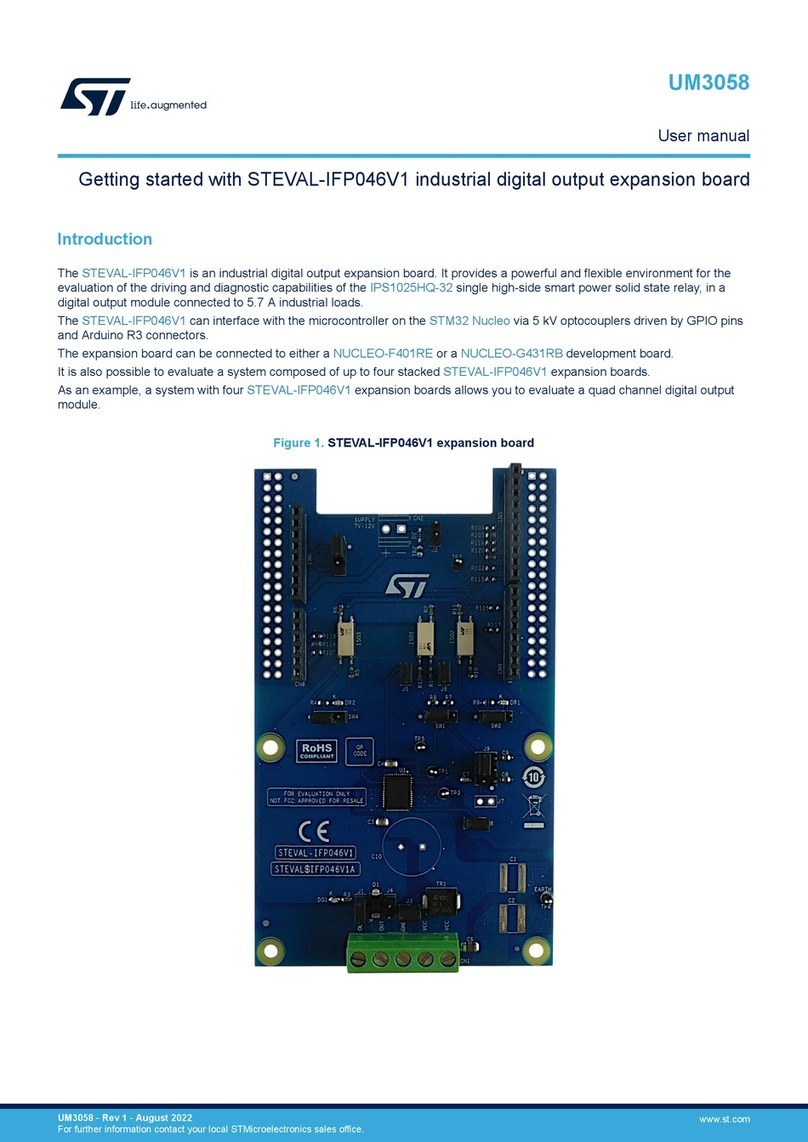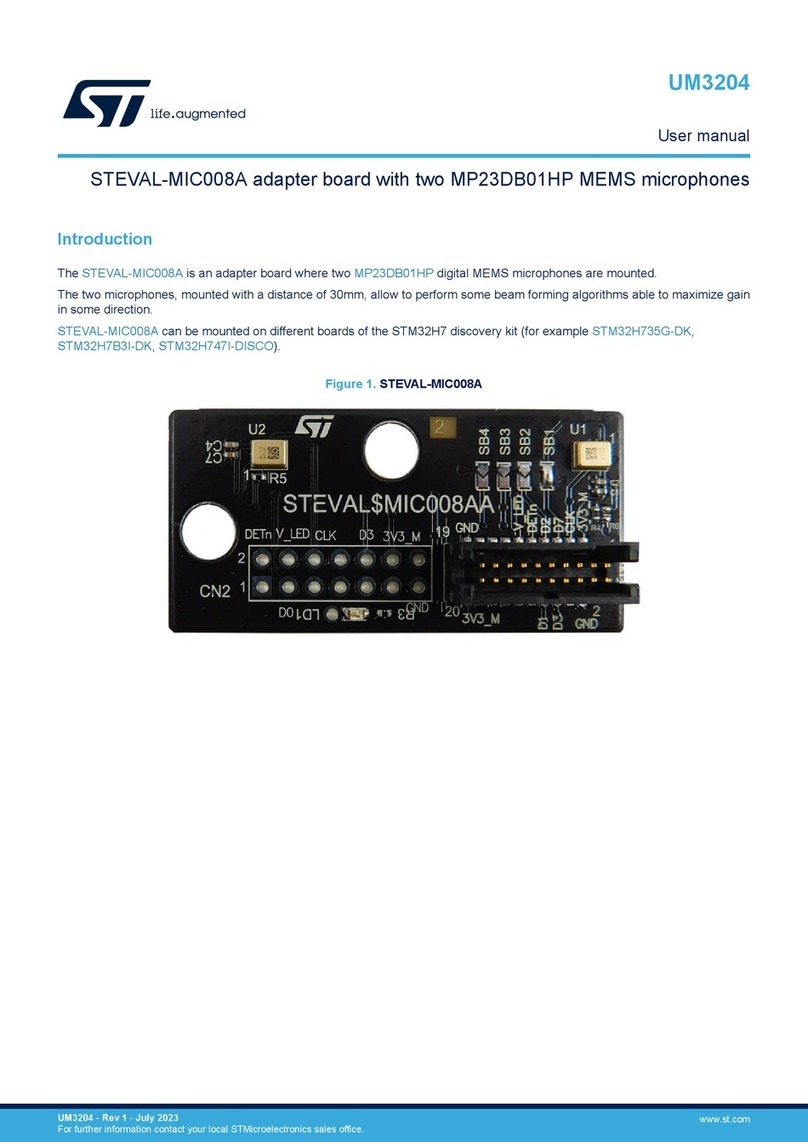
UM2032 Rev 3 3/40
UM2032 Contents
4
5.9 Digital microphones . . . . . . . . . . . . . . . . . . . . . . . . . . . . . . . . . . . . . . . . . 22
5.10 USB OTG FS . . . . . . . . . . . . . . . . . . . . . . . . . . . . . . . . . . . . . . . . . . . . . . 22
5.10.1 32F412GDISCOVERY is USB device . . . . . . . . . . . . . . . . . . . . . . . . . . 23
5.10.2 32F412GDISCOVERY is USB host . . . . . . . . . . . . . . . . . . . . . . . . . . . . 23
5.11 microSD™ card . . . . . . . . . . . . . . . . . . . . . . . . . . . . . . . . . . . . . . . . . . . . 23
5.12 I2C extension connector . . . . . . . . . . . . . . . . . . . . . . . . . . . . . . . . . . . . . . 23
5.13 Quad-SPI NOR Flash memory . . . . . . . . . . . . . . . . . . . . . . . . . . . . . . . . . 24
5.14 Virtual COM port . . . . . . . . . . . . . . . . . . . . . . . . . . . . . . . . . . . . . . . . . . . . 24
5.15 ARDUINO®Uno V3 connectors . . . . . . . . . . . . . . . . . . . . . . . . . . . . . . . . 24
5.16 Extension connectors P1 and P2 . . . . . . . . . . . . . . . . . . . . . . . . . . . . . . . 26
5.17 LCD display, backlight and touch panel . . . . . . . . . . . . . . . . . . . . . . . . . . 28
5.17.1 LCD display . . . . . . . . . . . . . . . . . . . . . . . . . . . . . . . . . . . . . . . . . . . . . . 28
5.17.2 LCD signal access (CN7) . . . . . . . . . . . . . . . . . . . . . . . . . . . . . . . . . . . 29
5.17.3 Backlight . . . . . . . . . . . . . . . . . . . . . . . . . . . . . . . . . . . . . . . . . . . . . . . . 30
5.17.4 Touch panel . . . . . . . . . . . . . . . . . . . . . . . . . . . . . . . . . . . . . . . . . . . . . . 30
5.18 Joystick and LEDs . . . . . . . . . . . . . . . . . . . . . . . . . . . . . . . . . . . . . . . . . . 30
6 Connectors . . . . . . . . . . . . . . . . . . . . . . . . . . . . . . . . . . . . . . . . . . . . . . . 32
6.1 I2C extension connector CN10 . . . . . . . . . . . . . . . . . . . . . . . . . . . . . . . . . 32
6.2 USB OTG FS Micro-AB connector CN3 . . . . . . . . . . . . . . . . . . . . . . . . . . 32
6.3 microSD™ connector CN13 . . . . . . . . . . . . . . . . . . . . . . . . . . . . . . . . . . . 33
6.4 ST-LINK/V2-1 USB Micro-B connector CN6 . . . . . . . . . . . . . . . . . . . . . . 33
7 32F412GDISCOVERY Discovery kit information . . . . . . . . . . . . . . . . . 35
7.1 Product marking . . . . . . . . . . . . . . . . . . . . . . . . . . . . . . . . . . . . . . . . . . . . 35
7.2 32F412GDISCOVERY product history . . . . . . . . . . . . . . . . . . . . . . . . . . . 36
7.2.1 Product identification 32F412GDISCO/ . . . . . . . . . . . . . . . . . . . . . . . . . 36
7.2.2 Product identification DK32F412G$AU1 . . . . . . . . . . . . . . . . . . . . . . . . 36
7.3 Board revision history . . . . . . . . . . . . . . . . . . . . . . . . . . . . . . . . . . . . . . . . 36
7.3.1 MB1209 revision D-02 . . . . . . . . . . . . . . . . . . . . . . . . . . . . . . . . . . . . . . 36
7.3.2 MB1209 revision D-04 . . . . . . . . . . . . . . . . . . . . . . . . . . . . . . . . . . . . . . 36
7.4 Board known limitations . . . . . . . . . . . . . . . . . . . . . . . . . . . . . . . . . . . . . . 36
7.4.1 MB1209 revision D-02 . . . . . . . . . . . . . . . . . . . . . . . . . . . . . . . . . . . . . . 36
7.4.2 MB1209 revision D-04 . . . . . . . . . . . . . . . . . . . . . . . . . . . . . . . . . . . . . . 36


